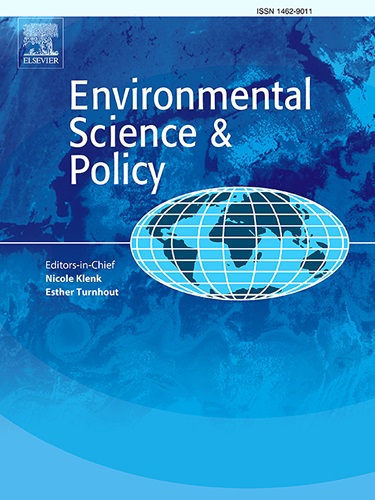揭示保护区共同治理中计划和感知的公平安排之间的差异:来自赞比亚北卢安瓜生态系统的证据
IF 4.9
2区 环境科学与生态学
Q1 ENVIRONMENTAL SCIENCES
引用次数: 0
摘要
环境公平的讨论日益影响地方、国家和国际各级的保护政策。各种以社区为基础的自然资源管理干预措施努力将公平纳入保护实践,特别注重解决人类与野生动物的冲突。然而,在确保公平措施转化为有形和可感知的公平方面仍然存在挑战。本研究调查并分析了在赞比亚北卢安瓜国家公园附近的三个野生动物管理区,来自政府和非政府实体的代表以及居住在尊重传统治理结构的共同治理框架内的当地社区成员对公平的看法。我们采访了15位政府官员和15位非政府组织代表,并与来自6个乡村行动小组的当地社区成员进行了20次焦点小组讨论。政府和非政府组织行动者报告说,他们努力制定分配和程序上的公平,同时实现保护目标。尽管这些措施旨在缓解人类与野生动物的冲突,促进合作保护,但却引发了当地人的不满,因为他们认为,促进公平的干预措施未能充分解决与野生动物共存的相关成本。此外,由于野生动物和保护目标似乎优先于它们的福祉,人们产生了深刻的误认感。对公平的不同看法影响保护效果,因为自上而下的公平措施可能促进生物多样性,但同时减少当地的支持和管理,从而危及社区的长期参与。预期和实现的公平成果之间的差距突出表明,必须通过承认当地居民在实施保护干预措施之前和期间的利益、能力和影响的异质性,优先考虑公认的公平。本文章由计算机程序翻译,如有差异,请以英文原文为准。
Unveiling disparities between planned and perceived equity arrangements in protected area co-governance: Evidence from the North Luangwa Ecosystem in Zambia
Environmental equity discussions have increasingly influenced conservation policies at local, national, and international levels. Various community-based natural resource management interventions strive to incorporate equity within conservation practices, with a particular focus on resolving human-wildlife conflicts. Nevertheless, the challenge persists in ensuring that equity measures translate into both tangible and perceived fairness. This study examined and disaggregated perceptions of equity among representatives from government and non-government entities, and local community members residing within co-governance frameworks that honor traditional governance structures in three Game Management Areas adjacent to the North Luangwa National Park in Zambia. We conducted key informant interviews with 15 Government officials and 15 NGO representatives in conjunction with 20 focus group discussions with local community members from six Village Action Groups. The government and NGO actors reported efforts to enact both distributional and procedural equity concurrently with conservation aims. Despite intentions to mitigate human-wildlife conflicts and foster cooperative conservation, these measures precipitated local dissatisfaction, as they perceived that the equity-facilitating interventions inadequately addressed the costs associated with coexisting with wildlife. Furthermore, a profound sense of misrecognition was felt as wildlife and conservation objectives appeared prioritized over their well-being. Divergent perceptions of equity influence conservation efficacy, as top-down equity measures may boost biodiversity yet simultaneously diminish local support and stewardship, thereby risking long-term community engagement. The disparity between anticipated and realized equity outcomes underscores the necessity of prioritizing recognitional equity by acknowledging the heterogeneity of interests, capacities, and influence of local populations before and during the implementation of conservation interventions.
求助全文
通过发布文献求助,成功后即可免费获取论文全文。
去求助
来源期刊

Environmental Science & Policy
环境科学-环境科学
CiteScore
10.90
自引率
8.30%
发文量
332
审稿时长
68 days
期刊介绍:
Environmental Science & Policy promotes communication among government, business and industry, academia, and non-governmental organisations who are instrumental in the solution of environmental problems. It also seeks to advance interdisciplinary research of policy relevance on environmental issues such as climate change, biodiversity, environmental pollution and wastes, renewable and non-renewable natural resources, sustainability, and the interactions among these issues. The journal emphasises the linkages between these environmental issues and social and economic issues such as production, transport, consumption, growth, demographic changes, well-being, and health. However, the subject coverage will not be restricted to these issues and the introduction of new dimensions will be encouraged.
 求助内容:
求助内容: 应助结果提醒方式:
应助结果提醒方式:


